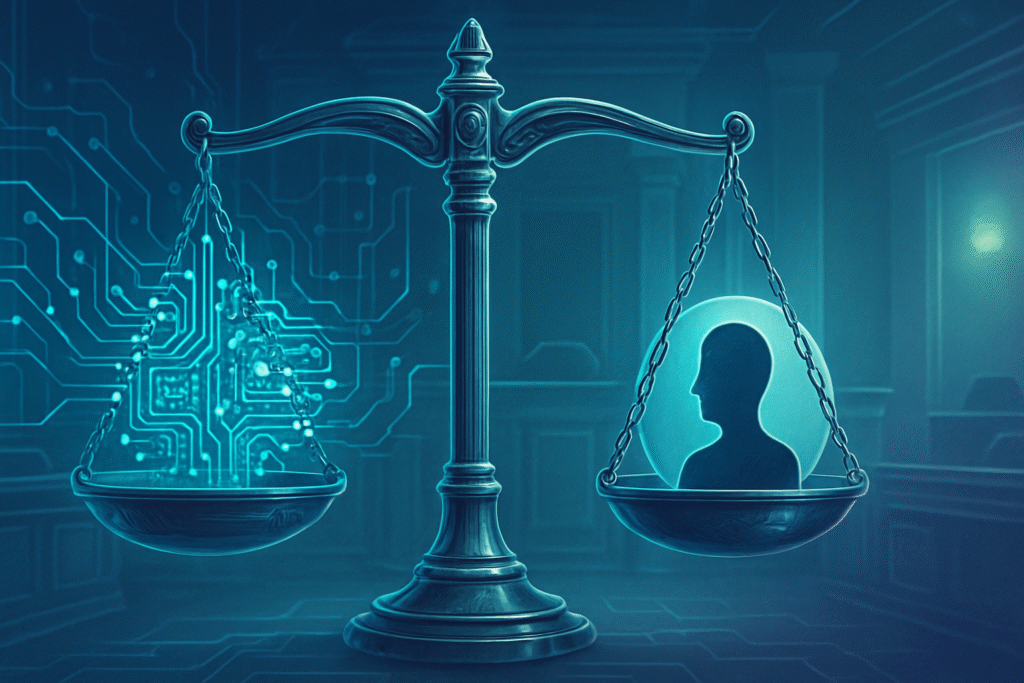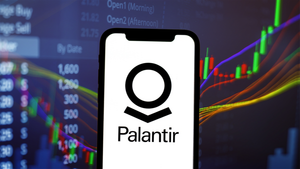
New York, NY – October 10, 2025 – In a significant move set to shape the future of artificial intelligence integration within the legal system, the New York court system today announced its interim AI policy. Developed by the Unified Court System's Advisory Committee on AI and the Courts, this groundbreaking policy establishes critical safeguards for the responsible use of AI by judges and non-judicial employees across all court operations. It represents a proactive stance by one of the nation's largest and busiest court systems, signaling a clear commitment to leveraging AI's benefits while rigorously mitigating its inherent risks.
The policy, effective immediately, underscores a foundational principle: AI is a tool to augment, not replace, human judgment, discretion, and decision-making within the judiciary. Its immediate significance lies in setting a high bar for ethical AI deployment in a sensitive public sector, emphasizing fairness, accountability, and comprehensive training as non-negotiable pillars. This timely announcement arrives as AI technologies rapidly advance, prompting legal and ethical questions worldwide, and positions New York at the forefront of establishing practical, human-centric guidelines for AI in justice.
The Pillars of Responsible AI: Human Oversight, Approved Tools, and Continuous Education
The new interim AI policy from the New York Unified Court System is meticulously designed to integrate AI into court processes with an unwavering focus on integrity and public trust. A core tenet is the absolute requirement for thorough human review of any AI-generated output, such as draft documents, summaries, or research findings. This critical human oversight mechanism is intended to verify accuracy, ensure fairness, and confirm the use of inclusive language, directly addressing concerns about AI bias and factual errors. It unequivocally states that AI is an aid to productivity, not a substitute for the meticulous scrutiny and judgment expected of legal professionals.
Furthermore, the policy strictly limits the use of generative AI to Unified Court System (UCS)-approved AI tools. This strategic restriction aims to control the quality, security, and reliability of the AI applications utilized within the court system, preventing the proliferation of unvetted or potentially compromised external AI services. This approach differs significantly from a more open-ended adoption model, prioritizing a curated and secure environment for AI integration. The Advisory Committee on AI and the Courts, instrumental in formulating this policy, was specifically tasked with identifying opportunities to enhance access to justice through AI, while simultaneously erecting robust defenses against bias and ensuring that human input remains central to every decision.
Perhaps one of the most forward-looking components of the policy is the mandate for initial and ongoing AI training for all UCS judges and non-judicial employees who have computer access. This commitment to continuous education is crucial for ensuring that personnel can effectively and responsibly leverage AI tools, understanding both their immense capabilities and their inherent limitations, ethical implications, and potential for error. The emphasis on training highlights a recognition that successful AI integration is not merely about technology adoption, but about fostering an informed and discerning user base capable of critically evaluating AI outputs. Initial reactions from the broader AI research community and legal tech experts are likely to commend New York's proactive and comprehensive approach, particularly its strong emphasis on human review and dedicated training, setting a potential benchmark for other jurisdictions.
Navigating the Legal Tech Landscape: Implications for AI Innovators
The New York court system's new AI policy is poised to significantly influence the legal technology landscape, creating both opportunities and challenges for AI companies, tech giants, and startups. Companies specializing in AI solutions for legal research, e-discovery, case management, and document generation that can demonstrate compliance with stringent fairness, accountability, and security standards stand to benefit immensely. The policy's directive to use only "UCS-approved AI tools" will likely spur a competitive drive among legal tech providers to develop and certify products that meet these elevated requirements, potentially creating a new gold standard for AI in the judiciary.
This framework could particularly favor established legal tech firms with robust security protocols and transparent AI development practices, as well as agile startups capable of quickly adapting their offerings to meet the specific compliance mandates of the New York courts. For major AI labs and tech companies, the policy underscores the growing demand for enterprise-grade, ethically sound AI applications, especially in highly regulated sectors. It may encourage these giants to either acquire compliant legal tech specialists or invest heavily in developing dedicated, auditable AI solutions tailored for judicial use.
The policy presents a potential disruption to existing products or services that do not prioritize transparent methodologies, bias mitigation, and verifiable outputs. Companies whose AI tools operate as "black boxes" or lack clear human oversight mechanisms may find themselves at a disadvantage. Consequently, market positioning will increasingly hinge on a provider's ability to offer not just powerful AI, but also trustworthy, explainable, and accountable systems that empower human users rather than supersede them. This strategic advantage will drive innovation towards more responsible and transparent AI development within the legal domain.
A Blueprint for Responsible AI in Public Service
The New York court system's interim AI policy fits squarely within a broader global trend of increasing scrutiny and regulation of artificial intelligence, particularly in sectors that impact fundamental rights and public trust. It serves as a potent example of how governmental bodies are beginning to grapple with the ethical dimensions of AI, balancing the promise of enhanced efficiency with the imperative of safeguarding fairness and due process. This policy's emphasis on human judgment as paramount, coupled with mandatory training and the exclusive use of approved tools, positions it as a potential blueprint for other court systems and public service institutions worldwide contemplating AI adoption.
The immediate impacts are likely to include heightened public confidence in the judicial application of AI, knowing that robust safeguards are in place. It also sends a clear message to AI developers that ethical considerations, bias detection, and explainability are not optional extras but core requirements for deployment in critical public infrastructure. Potential concerns, however, could revolve around the practical challenges of continuously updating training programs to keep pace with rapidly evolving AI technologies, and the administrative overhead of vetting and approving AI tools. Nevertheless, comparisons to previous AI milestones, such as early discussions around algorithmic bias or the first regulatory frameworks for autonomous vehicles, highlight this policy as a significant step towards establishing mature, responsible AI governance in a vital societal function.
This development underscores the ongoing societal conversation about AI's role in decision-making, especially in areas affecting individual lives. By proactively addressing issues of fairness and accountability, New York is contributing significantly to the global discourse on how to harness AI's transformative power without compromising democratic values or human rights. It reinforces the idea that technology, no matter how advanced, must always serve humanity, not dictate its future.
The Road Ahead: Evolution, Adoption, and Continuous Refinement
Looking ahead, the New York court system's interim AI policy is expected to evolve as both AI technology and judicial experience with its application mature. In the near term, the focus will undoubtedly be on the widespread implementation of the mandated initial AI training for judges and court staff, ensuring a baseline understanding of the policy's tenets and the responsible use of approved tools. Simultaneously, the Advisory Committee on AI and the Courts will likely continue its work, refining the list of UCS-approved AI tools and potentially expanding the policy's scope as new AI capabilities emerge.
Potential applications and use cases on the horizon include more sophisticated AI-powered legal research platforms, tools for summarizing voluminous case documents, and potentially even AI assistance in identifying relevant precedents, all under strict human oversight. However, significant challenges need to be addressed, including the continuous monitoring for algorithmic bias, ensuring data privacy and security, and adapting the policy to keep pace with the rapid advancements in generative AI and other AI subfields. The legal and technical landscapes are constantly shifting, necessitating an agile and responsive policy framework.
Experts predict that this policy will serve as an influential model for other state and federal court systems, both nationally and internationally, prompting similar initiatives to establish clear guidelines for AI use in justice. What happens next will involve a continuous dialogue between legal professionals, AI ethicists, and technology developers, all striving to ensure that AI integration in the courts remains aligned with the fundamental principles of justice and fairness. The coming weeks and months will be crucial for observing the initial rollout and gathering feedback on the policy's practical application.
A Defining Moment for AI in the Judiciary
The New York court system's announcement of its interim AI policy marks a truly defining moment in the history of artificial intelligence integration within the judiciary. By proactively addressing the critical concerns of fairness, accountability, and user training, New York has established a comprehensive framework that aims to harness AI's potential while steadfastly upholding the bedrock principles of justice. The policy's core message—that AI is a powerful assistant but human judgment remains supreme—is a crucial takeaway that resonates across all sectors contemplating AI adoption.
This development's significance in AI history cannot be overstated; it represents a mature and thoughtful approach to governing AI in a high-stakes environment, contrasting with more reactive or permissive stances seen elsewhere. The emphasis on UCS-approved tools and mandatory training sets a new standard for responsible deployment, signaling a future where AI in public service is not just innovative but also trustworthy and transparent. The long-term impact will likely be a gradual but profound transformation of judicial workflows, making them more efficient and accessible, provided the human element remains central and vigilant.
As we move forward, the key elements to watch for in the coming weeks and months include the implementation of the training programs, the specific legal tech companies that gain UCS approval, and how other jurisdictions respond to New York's pioneering lead. This policy is not merely a set of rules; it is a living document that will shape the evolution of AI in the pursuit of justice for years to come.
This content is intended for informational purposes only and represents analysis of current AI developments.
TokenRing AI delivers enterprise-grade solutions for multi-agent AI workflow orchestration, AI-powered development tools, and seamless remote collaboration platforms.
For more information, visit https://www.tokenring.ai/.





